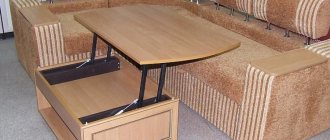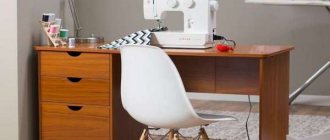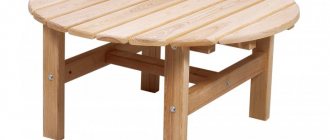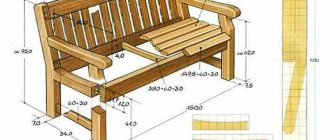A coordinate table for a drilling machine helps to make the operation of the unit precise, smoothly move the workpiece to the desired position, and avoid jumps and twisting of the part. The efficiency of working on any type of machine increases significantly when using a coordinate table, especially one made by yourself.
A coordinate table makes drilling faster, easier and more accurate. If a person has a set of tools and materials on hand, such equipment is easy to do independently.
Types and purpose
Tables for drilling machines come in several different types, can be made of different materials and function on different principles. This is a simple fixing device, with the help of which the workpiece is secured in the required position.
X-ray table model
With the help of a table, a part is able to change its position and angle during processing; manipulation allows you to perform different types of processing without removing or moving the part. The methods for fixing equipment are as follows:
- using vacuum and differential pressure;
- mechanical devices;
- the part is held on the table independently due to its heavy weight.
For amateurs who are planning to make a table for a drilling machine with their own hands, the second fixation option is most suitable.
The workpiece being fixed in different installations has a different number of degrees of freedom - two or three. In the first case, she is able to move only along the X and Y coordinates; in the second, the ability to move up, down or along the Z coordinate is added. For home use, two degrees of freedom is quite enough.
Hardware Definition
A coordinate table is a manipulator that is used to secure the workpiece being processed. There are several options for machine tables:
- vacuum fastening method - used quite rarely due to the complexity of the design;
- the mechanical type of fastening is simple to implement, you can do it yourself quickly;
- fastening due to the weight of the workpiece. When using a drilling machine, large workpieces can be processed. Due to its weight, the supported part remains in place even under strong impacts.
There are positioning with one, two, three degrees of freedom. This point determines that the workpiece can be fed along three different coordinates. When drilling a flat product, it is enough to move it along just one horizontal plane.
We can roughly distinguish two main types:
- Large dimensions. A large coordinate table is created taking into account the fact that the equipment itself, as well as the workpiece, will be installed on it.
- A coordinate table of small overall dimensions is mounted on the equipment frame.
There are several control mechanisms by which the coordinate table changes its position:
- Mechanical drive is quite common. You can make it for a drilling machine with your own hands to set up small-scale production.
- An electric drive is installed quite often for a drilling machine. Making it yourself is quite difficult, since you need to maintain high precision during manufacturing. For automatic movement, the coordinate table must have its own power source.
- Another separate group can be called a mechanism that operates using numerical control.
You can make a small coordinate table with a mechanical drive with your own hands.
Equipment use
Before starting to operate the coordinate base, the master must study the safety rules, equipment features, as well as the lighting requirements in the room where the work is taking place.
The table is activated in the following ways:
- mechanical movement;
- use of electric drive;
- installation of CNC equipment.
The first or second option, if you implement it yourself, will be the most suitable.
Separately, it is worth mentioning such design options as a rotary table and a cross.
The first one is capable of rotating around its own axis and is the most convenient option if you need to process parts with axial symmetry, round and disc-shaped workpieces.
The cross drill table is more common in everyday use and provides the ability to move the workpiece in two directions: X and Y.
Do-it-yourself lifting table for a drilling machine – Machine tools, welding, metalworking
Additional devices that make the operator’s work more convenient and efficient are of great importance when operating drilling equipment. Thus, a coordinate table used to equip a drilling machine significantly increases the productivity of the device and the accuracy of the processing performed. This device can be purchased ready-made or made with your own hands.
Radial drilling machine TDR-20 with coordinate table
Purpose and types
In essence, a coordinate table is a movable metal platform on the surface of which a workpiece processed on a machine is mounted. Various methods of such fixation are possible:
- using mechanical devices;
- by means of vacuum;
- due to the own weight of massive parts.
Mechanical two-axis table fixed in standard grooves of the working surface of a drilling machine
Depending on their functionality, coordinate tables for drilling machines can have two or three degrees of freedom.
Thus, some models can only move in the horizontal plane (X and Y axes), while more technologically advanced ones can also make vertical movements (Z axis).
Tables of the first type are used when processing flat parts, and devices with the ability to move vertically are equipped with drilling machines that process parts with complex configurations.
At large industrial enterprises where large-sized parts are processed, long coordinate platforms are often used, on which, thanks to the presence of a special mounting frame in their design, both the workpiece and drilling equipment can be installed. Most of the models are mounted on the machine itself or on the surface of a workbench.
Various types of drives can be responsible for moving the coordinate table:
- mechanical;
- electric;
- equipped with a CNC system.
Coordinate table with electric drives
Warping characteristics
Coordinate-type tables, which are equipped with drilling machines, can be made with bases made of various materials:
- cast iron;
- become;
- light alloys based on aluminum.
Tables with a base made of aluminum construction are not designed for heavy loads, so they are used to equip drilling machines that process parts made of soft materials (wood, plastic). The advantages of devices whose frame is made of aluminum profile are:
- light weight;
- ease of installation;
- affordable price.
PROXXON-MICROMOT coordinate table made of high-strength aluminum alloy for benchtop drilling machine
Thanks to the simplicity of its design and the availability of manufacturing materials, such a table is easy to make with your own hands. If you don’t want to use a home-made device when working on a machine, you can purchase a ready-made kit for its assembly, which is produced by many companies.
Industrial coordinate tables for drilling machines, which are used most intensively and experience significant loads during operation, are manufactured with bases made of cast iron.
Cast Iron Cross Table for Industrial Drilling Machine
Both serial and home-made coordinate-type tables can be made on the basis of welded steel frames, which demonstrate high reliability. When making such a frame with your own hands, you should keep in mind that welded joints do not withstand vibration loads well, so in the finished structure it is necessary to get rid of internal stresses as much as possible. This is achieved through appropriate heat treatment (tempering).
Coordinate tables, depending on their purpose, can be made according to two design schemes:
Tables made according to the first scheme are equipped with universal drilling machines, on which parts of complex configurations are processed. The design features of such devices allow access to the workpiece being processed from three sides. Portal-type tables are equipped with machines on which holes are drilled in sheet blanks.
Gantry 3-axis CNC table
Guides
The guides along which the coordinate table moves are an important element of its design, since not only the smooth movement of the part, but also the accuracy of its processing depends on their quality and design features. Both in serial models and in homemade coordinate tables, the guides can be of rail or cylindrical type.
Smooth and accurate movement along the guides is ensured by the built-in carriage and bearing units. In cases where increased movement accuracy is required from the coordinate table, sliding bearings are used in its guides, since rolling bearings create significant play in the supports, although they reduce the friction force more effectively.
Bearing unit design
Guides for coordinate tables, depending on the type of carriage, are:
- equipped with an enlarged flange used to attach the structure to the bottom of the table;
- wafer-type, which are fastened in the usual way.
Source: https://stanki-info.com/podemnyy-stolik-dlya-sverlilnogo-stanka-svoimi-rukami/
Base material
Before you start creating a device, you need to think about what materials and spare parts to use. Preliminary preparation is necessary so that they can give the future creation the following characteristics:
- Normal working weight so that one person can work with such a table without noticeable difficulty.
- Simplicity and versatility of installation. A good product must be suitable for different types of drilling equipment.
- Maximum cost savings on manufacturing. If development turns out to be too expensive, wouldn’t it be easier to buy a ready-made item?
Most often, these requirements are met by the following common and economical options:
- steel;
- metal;
- cast iron;
- aluminum;
- duralumin.
If the table is needed mainly for drilling soft materials (wood, plastic), then aluminum will be the best option. It is extremely light and has sufficient strength.
If you have to work with metals, drill serious parts to a relatively large depth, then you will need something more durable - steel, cast iron, iron. These are heavy materials, but the loads they can withstand are impressive.
Guides
Of particular importance in the design of the device being developed are the so-called guides - components along which the table moves in the required directions.
The better they are made, the more accurately the specialist will work on the machine, set the position of the workpiece being processed and the easier it will be to move it to the right place, apply filler materials and perform other necessary actions.
Two types of guides are used: cylindrical type and rail type. It’s difficult to say which of them is more efficient - with high-quality implementation, both options perform well.
To make the sliding of the guides as smooth and accurate as possible, it is necessary to use special carriages and bearings. If the requirements for the accuracy of the equipment are not too high, then rolling bearings are quite suitable, otherwise, plain bearings must be used.
Roller bearings will create a slight amount of play, but for typical applications this is not a major problem.
For smooth sliding of the guides, it is possible to use rolling bearings
When making a product with your own hands, you need to choose the option that is most suitable for future tasks.
Selection of guides
The accuracy of processing depends on the correct selection and fastening of the table surface movement guides. Rail and cylindrical elements are used. They are produced with a carriage superstructure and mounted bearing units.
The choice of table guide type depends on the type of drive. The part in question works to overcome the friction force. If high precision in movement is required, it is better to choose plain bearings. Rolling bearings reduce friction but create a lot of play.
Depending on the type of carriage, the guides are:
- with an enlarged flange, for fastening to the bottom of the table;
- Wafer type for conventional mounting to top threaded holes.
If you make it yourself, you can order rails with a stainless steel coating. They have an increased service life and longer abrasion resistance.
Motion transmission mechanism
The most important part of the future device, no matter whether it is a rotary table for a drilling machine or a cross version, is the mechanism for transmitting movement from the control handles to the device.
It is best to make a drive with a mechanical type of movement; they are manually controlled. In this way, specialists can achieve greater accuracy of movements and high quality of work performed.
The components of the motion transmission mechanism are:
- racks and gears, gears;
- belt mechanisms;
- ball screw drives.
Ball Screws
Experts advise choosing the latter type of mechanism, especially when it comes to a cross table; it has many significant advantages:
- extremely small system play;
- the product moves very smoothly, without jerking;
- The ball screw operates quietly;
- under significant workloads it shows high stability.
Experts say that the disadvantage of the mechanism is the inability to achieve high operating speed, but if you are considering a cross table for a drilling machine, then high speed is usually not required.
To save money, the master needs to try to implement belt drives. They are simple and accessible, but have disadvantages:
- low accuracy;
- rapid wear;
- risk of belt breakage under load.
As a conclusion, we note that if a person decides to make a table for a drilling machine with his own hands, then there is nothing fundamentally unrealistic about this. A basic set of materials and tools will help you quickly complete the task. The task for a specialist is to choose the right type of structure and produce high-quality all the critical components of the future device.











